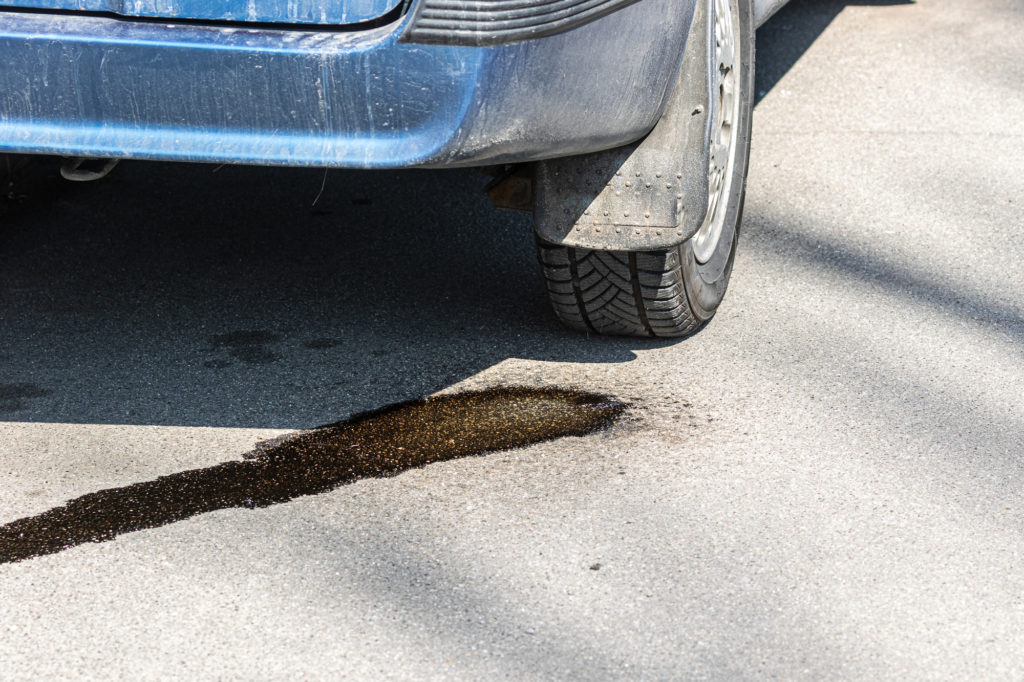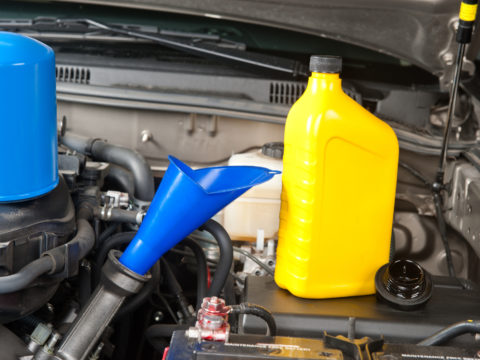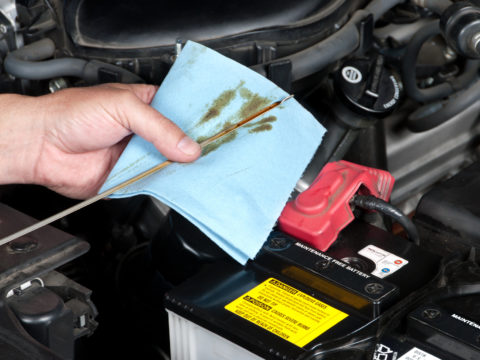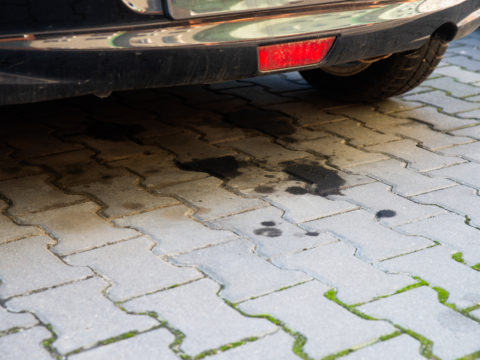Motor oil is an essential component of automotive engines, lubricating moving parts to ensure they don’t wear out from friction.
Because it’s a heavy liquid, it consists of long chains of hydrocarbons– meaning its molecules take longer to break apart and vaporize. Technically, motor oil is not flammable, but it is combustible.

Contents
Can Motor Oil Catch Fire?
Motor oil can catch fire, but it would take extreme heat or a mechanical error to make this happen. There are some safety rules to remember to keep motor oil from becoming a fire hazard.
First, store the oil in a safe place, remembering to handle it with care to prevent an accident. Preferably a locked, plastic container that is appropriately labeled and put somewhere dry and clean. Do not store oil near a heating source or fire to avoid accidents. If the liquid heats to the flash point, a fire could result.
Is Used Motor Oil Flammable?
Used motor oil is also not flammable. However, it is essential to remember that there is residue within used oil. These overburnt bits may cause excessive overheating if the dirty oil stays in an engine.
Is Synthetic Motor Oil Flammable?
Synthetic motor oil withstands higher temperatures in the engine because the molecules in synthetic oil behave differently. They become more like water, moving easily through the engine and not boiling off.
Synthetic oil creates even less vapor than regular motor oil, so the oil does not need to be topped off. Some synthetic motor oils even have a flash point of around 700⁰ Fahrenheit.
Is Crude Oil Flammable?
Crude oil is very flammable. It is a volatile product consisting of liquid hydrocarbons, nitrogen, sulfur, and oxygen. Benzene and n-hexane, flammable chemicals, are both found in crude oil, and it is full of carcinogens that could be harmful to your health.
How Flammable Is Motor Oil?
Even though motor oil is not technically flammable, it can still burn. It is important to note that motor oil will not be the cause of a fire, but it can make a fire worse in the right circumstances. Motor oil must be near an ignition source for it to burn, though, and that source must be at a high temperature.
It is also good to note that you don’t have to worry about motor oil catching fire when driving. The engine heats the oil to the flash point, causing vapor to be released. For flammable materials, this means it would catch fire.
However, the ventilation system built into every engine ensures that the vapor cannot build up enough to start a fire. When vapor leaves the engine, it doesn’t come back, so there’s no danger of a fire.
Motor Oil Flash Point
Because motor oil is not flammable, it requires extremely high heat to break apart the molecules and create vapor, which is what burns. This high heat is called the flash point, or the temperature at which a liquid will burn.
The flash point for motor oil is approximately 400⁰ Fahrenheit.
Synthetic Oil Flash Point
The flash point for synthetic motor oil is substantially higher than for regular motor oil. Its flash point is approximately 440⁰ Fahrenheit.
Used Oil Flash Point
Because of the burnt bits and other residue found within used motor oil, the flash point is lower than in regular motor oil. Remember, the higher the flash point, the better the oil.
It’s reasonable to expect used motor oil to have a lower flash point, approximately 248⁰ Fahrenheit.

Can You Burn Motor Oil in a Fire Pit?
You can, but it is extremely high-risk and unwise to do so. Once motor oil reaches its flash point, it burns hot. You cannot put out an oil fire with water. This is dangerous, so using motor oil in a fire pit isn’t recommended.
Because of its flash point, synthetic motor oil does not burn well, and the heat from the fire would have to be too hot to be near.
Used motor oil has carcinogens and other contaminants that are dangerous to breathe, so it’s even more dangerous to burn.
How To Dispose of Oily Rags
Oily rags are a fire hazard, so they should not be thrown into the regular trash. Instead, use the following steps as a guideline when disposing of oily rags:
- Place rags into a container with a lid or see-through plastic bag. Do not overfill, and make sure to leave a couple of inches at the top in case of expansion.
- Label container “oily waste.”
- Sort for recycling
- Take to landfill
- Note: If no container is available, soak rags in kitty litter and dispose of them in the garbage.
Remember, never burn oily rags!
Is It Illegal To Burn Used Motor Oil?
Waste oil burners offer benefits to businesses that generate large amounts of used oil. However, the EPA has strict guidelines to monitor the burning of used oil and closely monitor the practice. You must contact your local fire department to ensure the waste oil burner is approved.
You also want to make sure you’re following the appropriate guidelines. For example, some states do not allow burning used motor oil at all, and some require a permit.
Where To Dispose of Motor Oil for Free
A single quart of motor oil can pollute a million gallons of fresh water. It makes sense, then, that used motor oil disposal has some rigid safety precautions, and here’s why.
Used motor oil is:
- Insoluble and contains toxic chemicals
- It takes decades to degrade
- Sticky and creates a mess
- Contaminates fresh water
- Harmful to health if ingested through water
Because of these reasons, all states and counties have designated disposal areas. Here are a few options:
- Many car repair shops will take your used motor oil and dispose of it for you.
- Major cities have hazardous waste collection sites that will take your used motor oil.
- An oil change shop will generally take your used motor oil.
- Recycling facilities are also an excellent place to take used motor oil.














